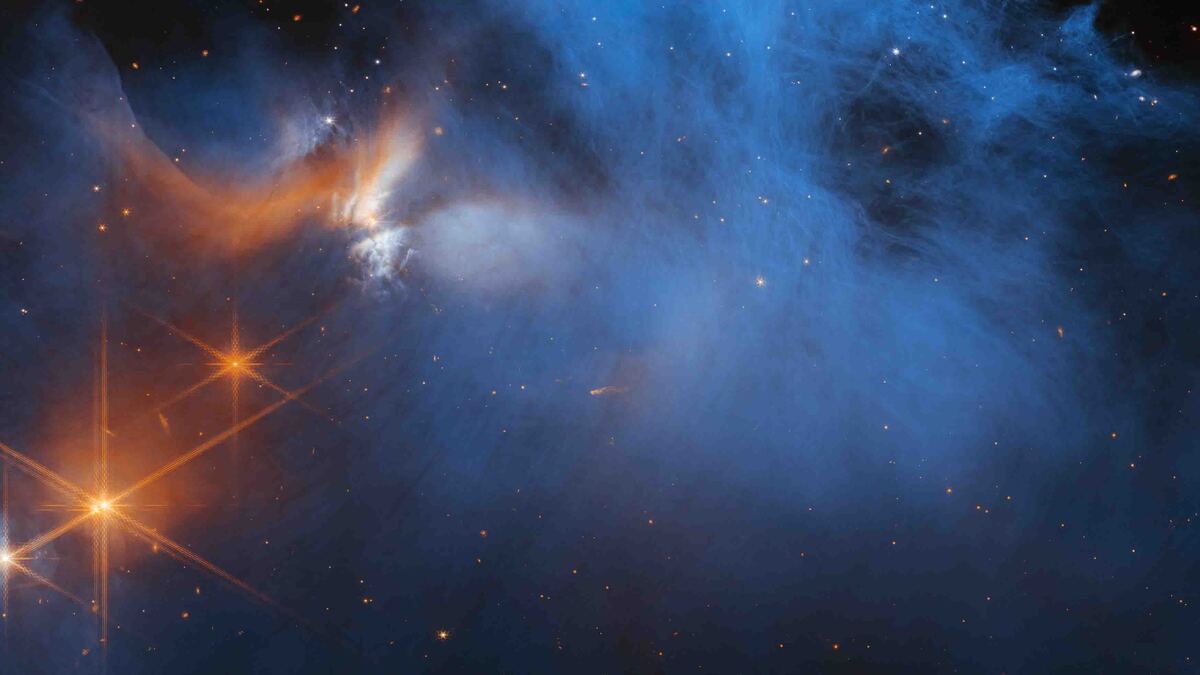Published:

Astronomers and space scientists have long known that space contains icy clouds where stars and planets are formed.
But they weren't entirely sure what was in there.
An international group of scientists, including Professor Martin McCoustra from Heriot-Watt, secured 30 hours of observational time on NASA's James Webb Space Telescope (JWST) and now have an answer.
The telescope sent back images and data that enabled the scientists to identify molecules in the dense, icy clouds of space that had never before been observed.
The findings are reported in Nature Astronomy.
Space ice contains small organic molecules like methane
Professor Martin McCoustra, an astrochemist in Heriot-Watt's Institute of Chemical Sciences, is part of the Ice Age project, which was granted access to the JWST as part of its Early Release Science programme.
“We formed the Ice Age project because we wanted a better idea of the molecules present in the ice in space.
“The James Webb telescope is exquisitely sensitive and has confirmed what many of us suspected.
“The images and data revealed molecular species never confirmed before in space. There is a whole range of small organic molecules in the ice clouds, including methane, ethanol and small compounds with nitrogen and sulfur.
“This is exciting for two reasons. One is that it makes us more confident in the conditions we're recreating in our laboratories.
“The second is that these molecules are the materials from which the building blocks for life are made.
“We are increasingly certain that many of the components of the organic soup from which life evolved had an extra-terrestrial origin and were generated as a natural part of the process of forming the sun and solar system.”
Using stars for light and discovery
The Ice Age team spent their 30 hours of JWST observation time looking at two areas of space in front of two background stars in the dense and difficult-to-investigate region of the Chameleon I molecular cloud. The region is roughly 500 light years from Earth, where temperatures range from -270 to -250 ℃. Dozens of young stars are forming there.
Professor McCoustra explained: “To see the icy dust grains in space, you need to use a star as a source of light to shine through and illuminate them. It's the same as we do in the laboratory, of course on a much grander scale.”
McCoustra added: “Even for space these are inhospitable environments, but thanks to innovations like the James Webb Space Telescope we are learning more and more all the time about these icy spaces in between stars and planets.
“We're confirming that what we see and recreate in our laboratories is what happens in space.
“This makes us more confident that chemistry in icy environments is the main pathway to forming the chemical precursors to life found in the primordial chemical soup.”
Professor Wendy Brown at the University of Sussex said “It is exciting to be a part of this multinational collaboration to use the James Webb Space Telescope to search for molecules in ices in space.
“For laboratory scientists like myself and Professor McCoustra, these observations help to guide the studies we undertake in our laboratories”
The Ice Age team has already planned further observations and hopes to trace the journey of ices from formation through to the assemblage of icy comets.
Read more about the Ice Age project on its website.